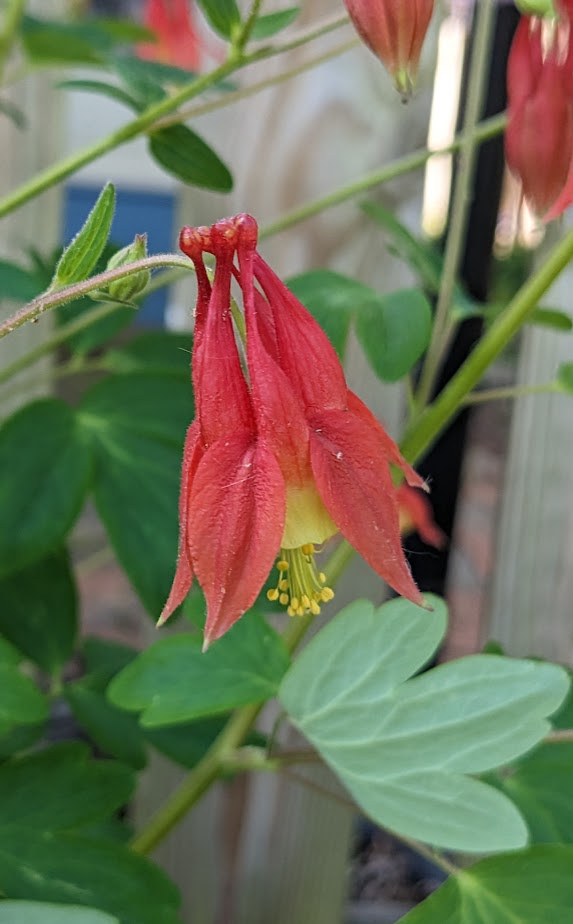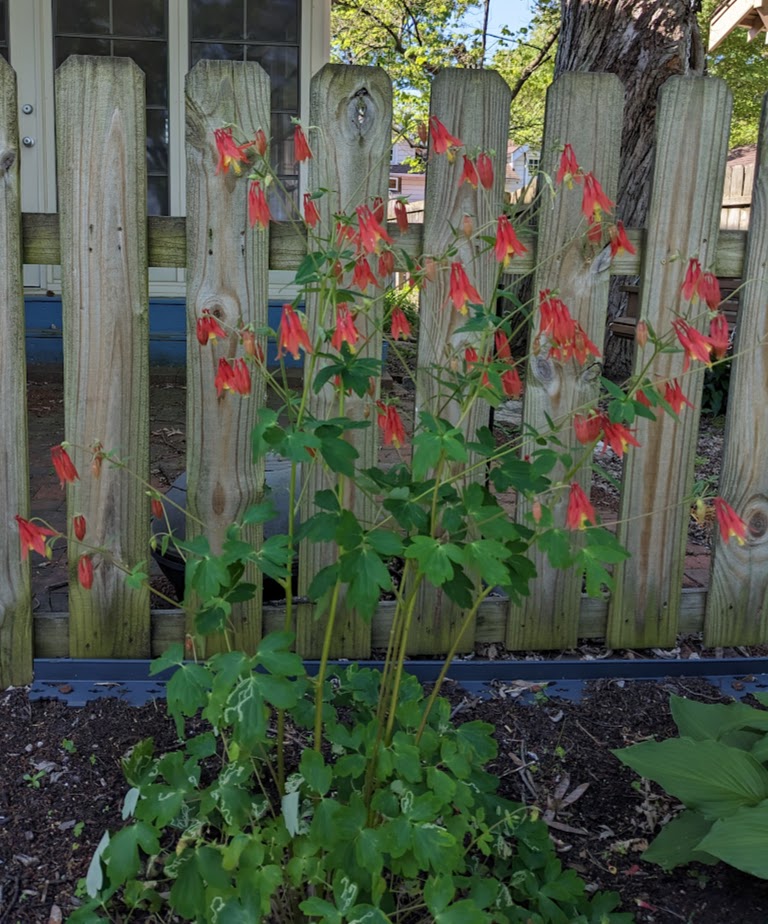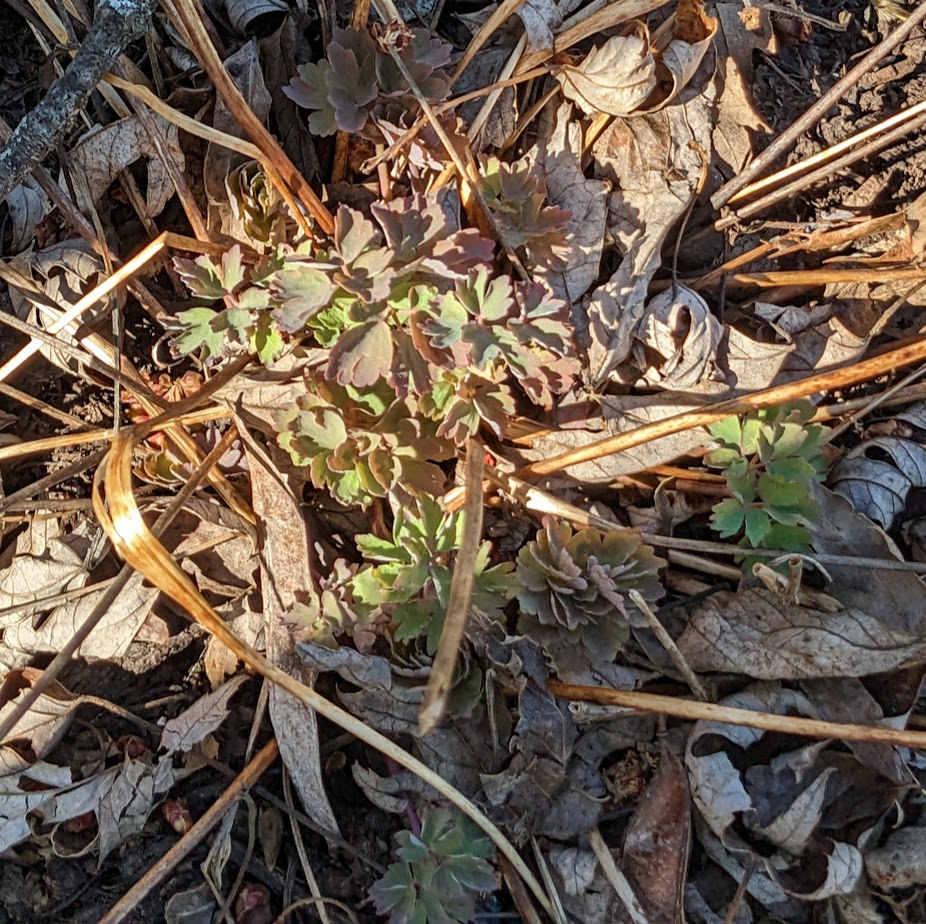Columbine (aquilegia) is one of those garden-worthy native perennials that can be used in many different types of designs from the natural-looking to the formal.
The genus contains nearly 70 different species, and you can find columbine at most mainstream garden centers. These eye-popping flowers in a wide variety of colors have many names like McKana hybrid or Giant, William Guiness or named by their color, but the majority of these are cultivars of Aquilegia vulgaris which originates in Europe.
These certainly aren’t a bad choice for home gardens, but we also have native columbines that look beautiful while also helping feed and restore habitat for our endangered pollinators.
This article will talk about my experience with (and summarize general research on) Eastern Red Columbine (Aquilegia canadensis), whose native range spans southeastern Canada and most of the eastern and midwestern United States.
For those in other locations in the US, you can try Western Columbine (Aquilegia formosa), native in California, Oregon, Washington, and western Canada; Rocky Mountain Columbine (Aquilegia saximontana) native to Colorado, Wyoming, Montana, Idaho, and parts of Utah (featuring white and lavender flowers) or Fan Columbine (Aquilegia flabellata): native to the western United States including Arizona, New Mexico, and Utah (featuring delicate blue or violet flowers).
My Experience Growing Native Eastern Red Columbine
I love growing native columbine for a variety of reasons: it’s spring-blooming to support early-season pollinators and hummingbirds; it’s a host plant for caterpillars; it’s highly versatile and can thrive in the shade of trees and shrubs or take a good deal of sun.
But perhaps the best part is that the flowers (seen below) are truly stunning, making a major statement in my garden.

What’s the Best Garden Setting for Native Eastern Red Columbine?
In general, columbine prefers partial shade to full sun. In its native range, it often grows in woodland edges, open woods, rocky slopes, and along stream banks. It’s also commonly found in rocky areas and can even find a home in the tiny crevices of paver or stone paths.
It can tolerate some direct sunlight but generally prefers dappled or filtered light for most of the day. Columbine also prefers well-drained soil and grows well in a variety of soil types, including loam, sandy loam, and rocky soils.
In my yard, it’s done great in a part sun environment, but others have done well in almost full shade with only a couple hours of direct but mostly dappled sun. And yes, I have even had one poke out of a tiny spot inside of a paver!

Columbine in general is short-lived but it self-sows abundantly, so you can easily welcome lots of free new plants to keep your colony going.
For this reason its often best in more natural gardens where you don’t mind it popping up in new places. But the showy, colorful flowers also make it great for formal landscapes as well; you just may need to pull some seedlings (or move them around) depending on where they are.

Transplanting Eastern Red Columbine
If you let the native columbine go to seed you will have a ton of new plants the next spring, or even later in the same season as I’ve found. They are easy to transplant to new locations, even though many sources say that columbine is difficult to transplant seedlings.
It certainly hasn’t been difficult for me, and perhaps the best time to transplant columbine is when they’re young (wildflower.org says “mature rootstocks are difficult to divide and transplant.”)
When a columbine seedling is small, I just dig up the clump of dirt around them to minimize root disturbance, carry it over and plop it in its new location, give it a good soak, and I’m done.
Most have thrived in their new location, the real issue with getting established is that they’ve proven a favorite snack for local wildlife. But thanks to the abundance of seedlings that eastern red columbine provides, I certainly don’t mind helping the critters find food (especially since my property was recently full of English ivy and other invasives) since I know some baby columbines will still make it. As in other situations, the answer here is to just keep planting more plants!
Do you grow native columbine in your garden? If so, feel free to share your experiences in the comments.
Leave a Reply